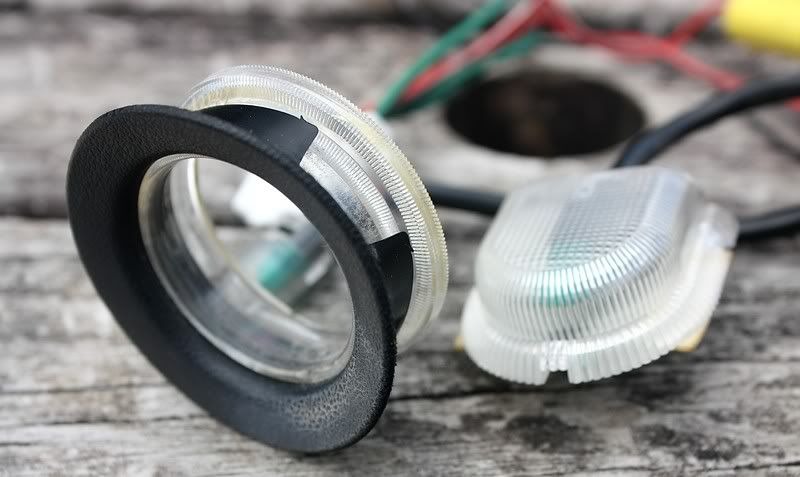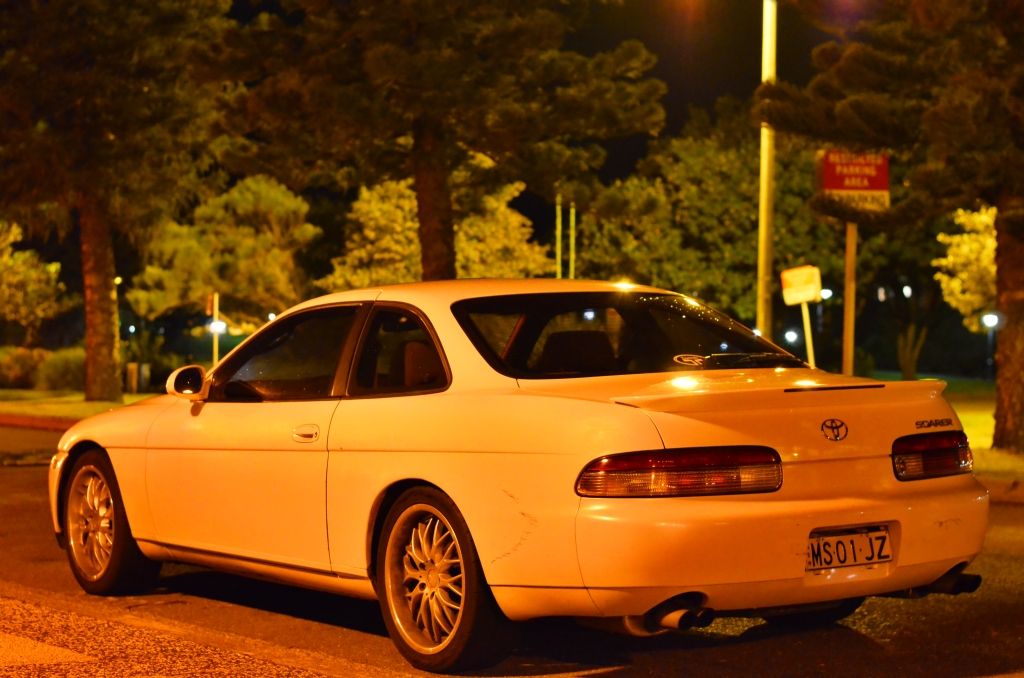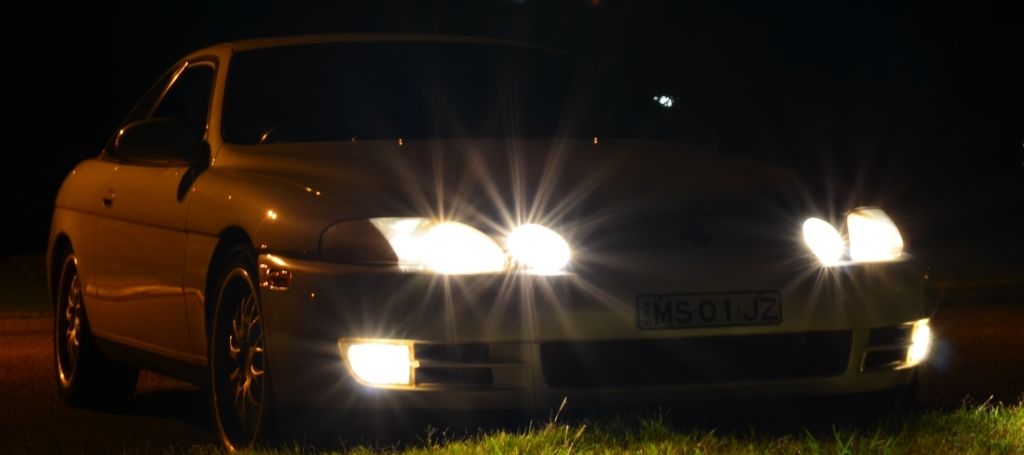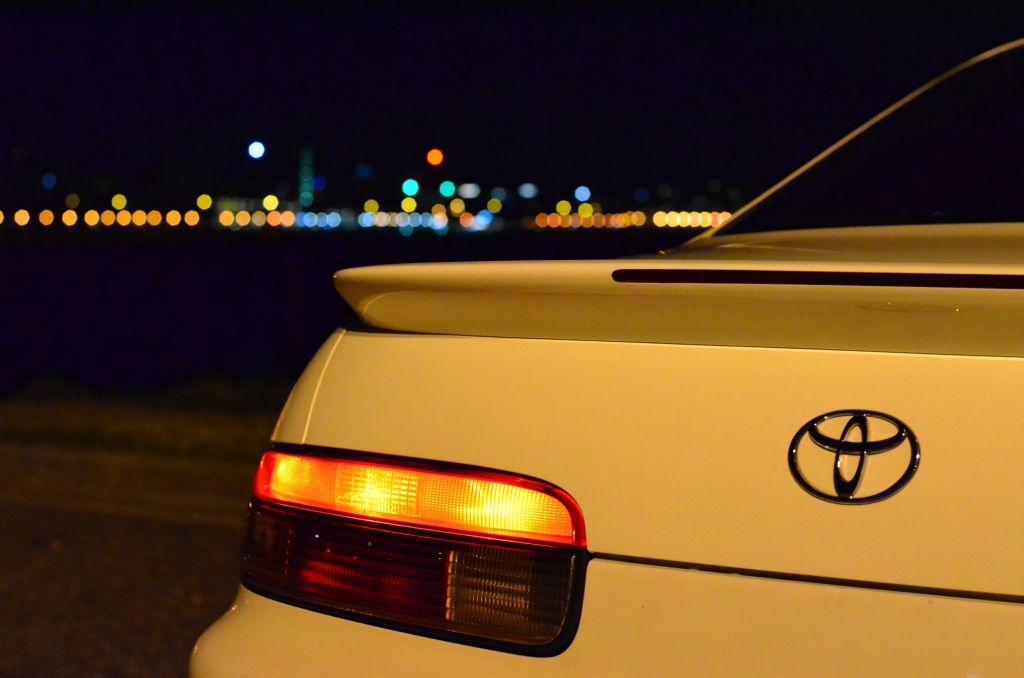-
Posts
3,701 -
Joined
-
Last visited
-
Days Won
140
Content Type
Profiles
Forums
Events
Gallery
Tutorials
News & Articles
Videos
Posts posted by Hiro
-
-
I could go another shirt/polo, still haven't gotten around to getting my username embroidered on my old one :P
-
Latest mods, and probably final for a long time (not my photos)
ZZT231/RS200/IS200 pedals (only installed brake and clutch so far, accelerator requires a tiny bit of work, probably just buy a second pedal arm and do it outside the car)

Keylight ring (pictured with additional downlighting, which I don't have)

-
What Pioneer head unit are you trying to put in?
-
If only I was looking to buy a car now and not in 6-12 months time...
-
Decent chance I'll make the trip down
-
North or south coast for cruising?
These are the options I'd consider (note they are pretty much all "driving" routes, not "destination" routes except for HVG)
North:
Old Pacific Highway - Berowra to Peats Ridge (can pick up GNR here)
Wisemans Ferry/Great North Road/Putty Rd loop (start and finish at Windsor)
Hunter Valley Gardens/Vineyards (bit of a stretch but the F3 will cut down on travel times)
South:
Royal National Park - Loftus to Stanwell Park, then;
Macquarie Pass/Robertson Pie Shop, or
Jamberoo, or
Kangaroo Valley, or
Kiama blowhole
West:
Bells Line
Bathurst
Jenolan Caves/Oberon
Dinner I vote for Bavarian Bier Cafe or Ribs n Rumps :P both in Parramatta (nice and central)
-
In as always*
*pending possible family commitments
-
If you're referring to the Wanted ad, it got deleted (not by me) because it turned into a slanging match. I'll see if I can get Pete to clear out the mess and repost it, if not then make a new ad and we'll push it through straight away.
-
And let me know how it goes! Lol ive been thinking about it for a while as well.
Want to know if its worth it or not!
Feel free to stick your head under my rear end at the next monthly meet.
Wait, that sounded a little wrong...
-
Seca garnish sold, rest still sitting here waiting to go to a loving home...
-
Back up to the top...
-
Checked your sway bar link ball joints? If they're not tight then they'll make a clunking noise when going over un-even bumps (as you'll get if you're entering a driveway on an angle etc)
-
BMC = Brake Master Cylinder
I think you'll also need the brake bias valve that attaches to the firewall, the rear disc setups run different bias to drums (and actually have slightly different front discs, too).
-
That's not bleeding the brakes, it's just the vacuum being depleted in the brake booster....The same thing when you have you ride without start you engine , push the brake pedal again and again the pedal itself will become harder and harder then stop at a level .
-
FYI, if you're looking around local yards you'll need to find AE102 rear brakes, doesn't matter if it's Seca or sedan. Easy way to tell is that all the 1.8L models (Conquest, RV, Ultima, CSX 1.8 etc) had disc rears and 14" wheels, whereas the 1.6L (CSi, CSX 1.6) models had drum rears and 13" wheels. The imported AE101 Levins/Sprinters will mostly likely all have rear discs though.He told me that you can either find a ae112 levin or the ae101 seca which apparently has the same design.
Please help me understand what else i need to do, for example how does the handbrake operate when i change to disc brakes.
On the AE102 rear disc setups, the handbrake cable acts on the caliper/piston directly, there is no small internal drum brake inside the rotor like a lot of other setups
-
Yeah most aftermarket gear knobs that I've seen have had the collar and grub screws...****ty setup and if you don't do it up tight then it can spinif its an after market gear knob are u sure there isnt a small screw somewhere around the sides of the knob that you tighten to press against the shift rod to kinda hold it in place ?
I have seen this previously on aftermarket knobs. A very bodgy solution but it can do the job .... just a thought
-
Hmmm, 5.0L TRD V8 from the Daytona 24hr....looks like Toyota could very easily enter the V8 Supercars with this.
Now they just need to hurry up and do it. Whilst it is great having Nissan and Merc/Erebus in the main series, they aren't at the pointy end yet and the Holdern/Ford ratio is still too far in the red camp :P
-
Fixed...Swaps for fishtank and VR Commodore!
-
I have the feeling that they can be imported as 'Grey Market', that there is a compliancing yard in Canberra (need to check RAWS).
A Hybrid Estima would be great as a City Taxi - to help keep smog down and move lots of people comfortabaly.
But all Estima imports have to be complied as a CamperVan (I think Toyota Australia have helped impose this - they don't want competition against the local market)
I think you'll find that it is the government imposing it, not Toyota. Standard rule of modern grey imports is that there can't be a locally sold equivalent of the body (in this case, the Tarago) unless the vehicle is deemed to be a "specialist or enthusiast vehicle" (the SEVS register)
To quote the RAWS (Registered Automotive Workshop Scheme, which determines who can import and comply vehicles)
The History of RAWS
The Early Days
The RAWS story begins back in the 1980's when the Full-Volume manufacturers supplying vehicles to the Australian market began cutting back the range of cars they supplied in order to reduce cost. Japanese manufacturers couldn't justify the costs of modifying the vehicles to the Australian Design Rules (ADRs) for such small numbers, and there was a very similar story for European manufacturers.
Low Volume Scheme Begins
Luckily for those who weren't satisfied with the choice offered in the Australian market, certain amendments were made to the Motor Vehicle Standards Act which allowed individual importers to alter foreign cars so they complied with the ADRsand then supply them to the Australian market. The first imports were mainly from America but in the early to mid 1990's importers started to turn their attention to Japanese vehicles. Japanese vehicles had several advantages: they were already right hand drive, they tended to be more recent models due to strict registration laws and the cars often had low kilometres and a good maintainance history. A further attraction of the Japanese models were their extra features that were rarely available on Australian vehicles.
Soon used car lots were filling up with Nissan, Mazda and Toyota brands and at very competitive prices in the luxury car market. The benefits of importing these cars were felt and the figures speak for themselves. In 1993 just over a thousand cars were imported through the low volume scheme but by 2002 more than 16000 for the year were imported. The total number of low-volume imports, however, was still under 100,000.
The Era of RAWS
A new chapter to the industry began on May 8th of 2003 when the Specialist and Enthusiast Vehicle Scheme (SEVS) was implemented. Since the implementation ofSEVS the number of imports has been slowed. The scheme came as a response to some loopholes in the low-volume import scheme which allowed a small number of unscrupulous operators to flaunt the law. Some importers took advantage of the scheme and a poor quality product for the consumer resulted. SEVS put an end to damaged or rusted cars being imported for any reason except parts, and additionally required all used imports now have to be certified by a Registered Automotive Workshop (RAW). Hence the Registered Automotive Workshop Scheme was born.
To be eligible under SEVS a vehicle is required to meet at least two of the four Specialist and Enthusiast criteria. It is then necessary for a RAW to hold documentary evidence that the vehicle meets the requirements of the ADRs, as required by the "Approval to Place Used Import Plates Determination" current at the time, and have the vehicle added to their schedule. Then the RAW is able to import up to 100 of these vehicles per annum (subject to a category limit of 100 vehicles per annum). It is worth noting that vehicles manufactured prior to 1 January 1989 fall outside the SEVS ruling, though these vehicles still require an engineer's certificate to be registered in Australia. Although the SEVS scheme has caused the price of imports to increase slightly it is committed to delivering a safer and higher quality product for the consumer and should keep Australian enthusiasts satisfied with affordable imports.
To be eligible (and there is a long process involved too) to be on the SEVS register, a car must meet 2 out of 4 criteria, as below
A hybrid Tarago would most likely only meet 1 of those criteria (Unusual Design Feature), maybe 2 (Performance, but I can't remember the kW/kg ratio). This is why you only really saw the performance versions of Chasers/Skylines etc imported as they could only meet Performance and Appearance criteria (they're not Unusual, and I don't think Hot4s counts as a "specialist publication")Ruling: A vehicle is eligible under the SEVS if it has never been sold in Australia in full volume and complies with 2 of the 4 following criteria.
- Appearance: The vehicle must be different and unique in its appearance.
- Unusual Design Features: The vehicle must have an unusual design feature.
- Performance: The vehicle must meet a minimum power to weight ratio.
- Specialist Publications: The vehicle is advertised regularly in a specialist publication
-
Haha. Once it got towed to the mechanics the wheel wouldn't spin at all apparently.
A sticking caliper is defiantly what happened, and the current theory is this:
- Breaks got slammed on.
- Caliper got knocked out of alignment from the force.
- Caliper caused friction on the disk, generating heat.
- A few hundred kms later enough heat was generated to get the grease boiling and bubbled out
- Without the grease, the bearings themselves started generating friction and melting
- Once the wheel had stopped moving, the bearings welded themselves to the hub.
Yeah, just a heads up: never underestimate the destructive power of a stuck caliper.
A few hundred km later? Ok, now I can believe it. When you said earlier "later on down the road" I thought you were meaning like a couple of km later that day, which is why I was so incredulous that enough heat could get into the bearings to destroy them.
-
So Cara's up in Townsville for the week so I've been having the pleasure of driving Lexi every day...decided I'd reward her with a bath and some happy snaps




-
Yeah sorry that was me >< , on my phone, the quote buttongot moved to the left instead of its normal place ! Pressed stop on the browser and hoped its not too late.
But i saved the quote ! Need to be more careful
Pfft, less than a day in the job and you're already out of control
Other things to consider are how full is the car? What is the traffic like? Lots of hills around? Do you regularly go on long trips and "blow out the cobwebs", or is it just 10 minute city trips where the engine never gets warm?
Fuel consumption ratings are a guide based off a standardised testing regime, and don't always reflect real-world scenarios for a lot of people
-
Not that it would affect your consumption, but 2010 Camrys actually have a 70L tank, not 60L. Trip computers are often ridiculously pessimistic when it comes to "distance to empty/litres left" though
^This, our camrys are 70L, when the fuel light comes on, we have approx 10L of fuel left in the tank
Hmm, weird that my post deleted itself....
-
Tyres are good along with pressure. top priority with kids.
Weather overdrive is off or on it is the same, tested a few times separately.
I have a 60L tank and only get 400km per tank
60/400 x 100 = 15L per100km
Has been this since I brought it in 2010 with 36,000km on it.
Great car just fuel and breaks are the two problem I can't figure out.
Thanks
How much fuel are you actually putting in the tank though? Just because it's a 60L tank doesn't mean you are using 100% of it, if you're filling up as soon as the warning light comes on you're probably only putting ~50L in, which improves the economy a fair bit (still not great though).










Why are Aurions so fast???!!!
in Aurion / TRD Aurion Club
Posted
I went flying past an XR6T once.....then he turned the blues and twos on
TOCAU does not condone street racing, no matter how awesomely fast 200 killer-wasp Aurions are.